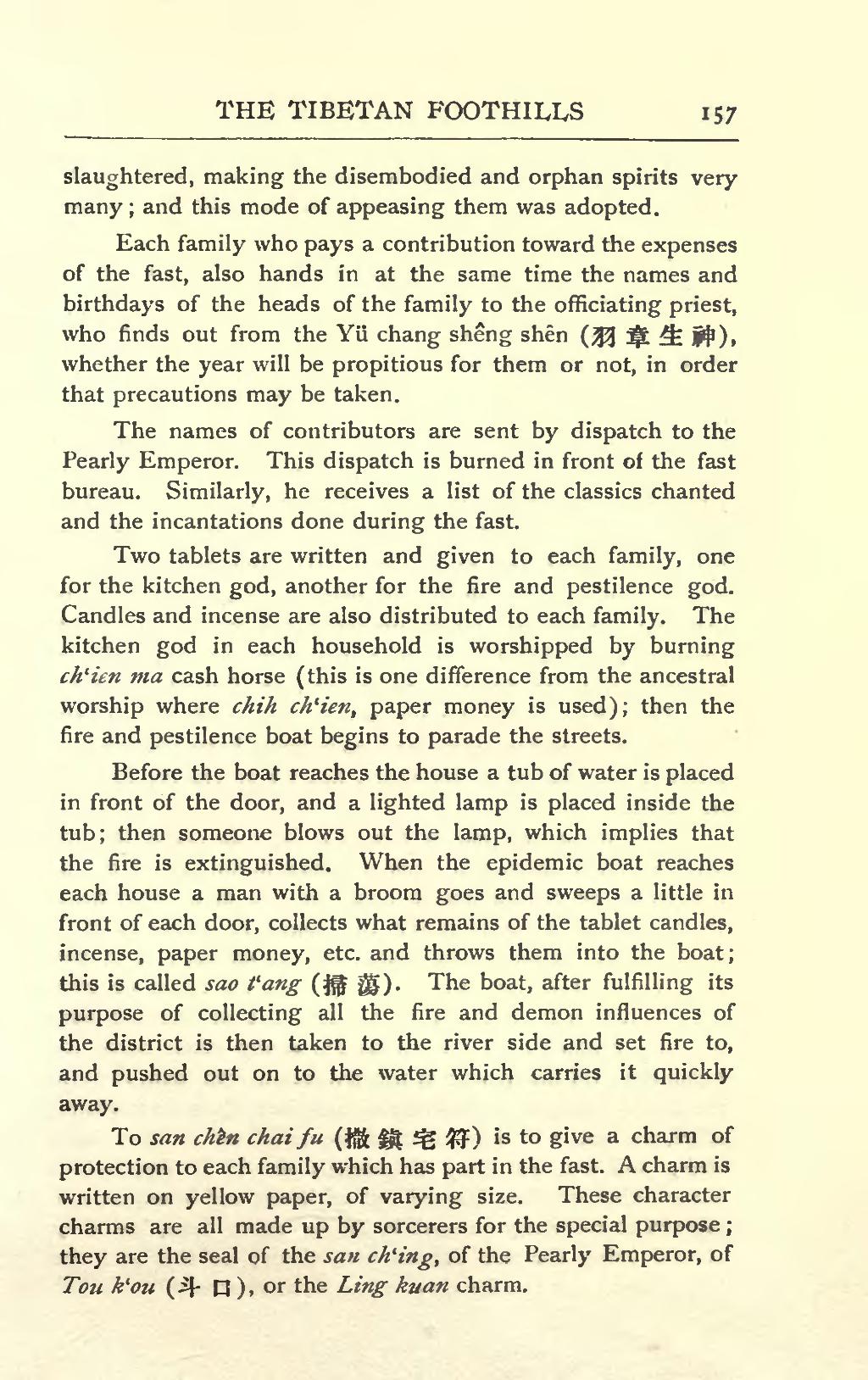slaughtered, making the disembodied and orphan spirits very many; and this mode of appeasing them was adopted.
Each family who pays a contribution toward the expenses of the fast, also hands in at the same time the names and birthdays of the heads of the family to the officiating priest, who finds out from the Yü chang shêng shên (羽章生神), whether the year will be propitious for them or not, in order that precautions may be taken.
The names of contributors are sent by dispatch to the Pearly Emperor. This dispatch is burned in front of the fast bureau. Similarly, he receives a list of the classics chanted and the incantations done during the fast.
Two tablets are written and given to each family, one for the kitchen god, another for the fire and pestilence god. Candles and incense are also distributed to each family. The kitchen god in each household is worshipped by burning ch‘ien ma cash horse (this is one difference from the ancestral worship where chih ch‘ien, paper money is used); then the fire and pestilence boat begins to parade the streets.
Before the boat reaches the house a tub of water is placed in front of the door, and a lighted lamp is placed inside the tub; then someone blows out the lamp, which implies that the fire is extinguished. When the epidemic boat reaches each house a man with a broom goes and sweeps a little in front of each door, collects what remains of the tablet candles, incense, paper money, etc. and throws them into the boat; this is called sao t‘ang (掃蕩). The boat, after fulfilling its purpose of collecting all the fire and demon influences of the district is then taken to the river side and set fire to, and pushed out on to the water which carries it quickly away.
To san chên chai fu (撒鎭宅符) is to give a charm of protection to each family which has part in the fast. A charm is written on yellow paper, of varying size. These character charms are all made up by sorcerers for the special purpose; they are the seal of the san ch‘ing, of the Pearly Emperor, of Tou k‘ou (斗口), or the Ling kuan charm.
